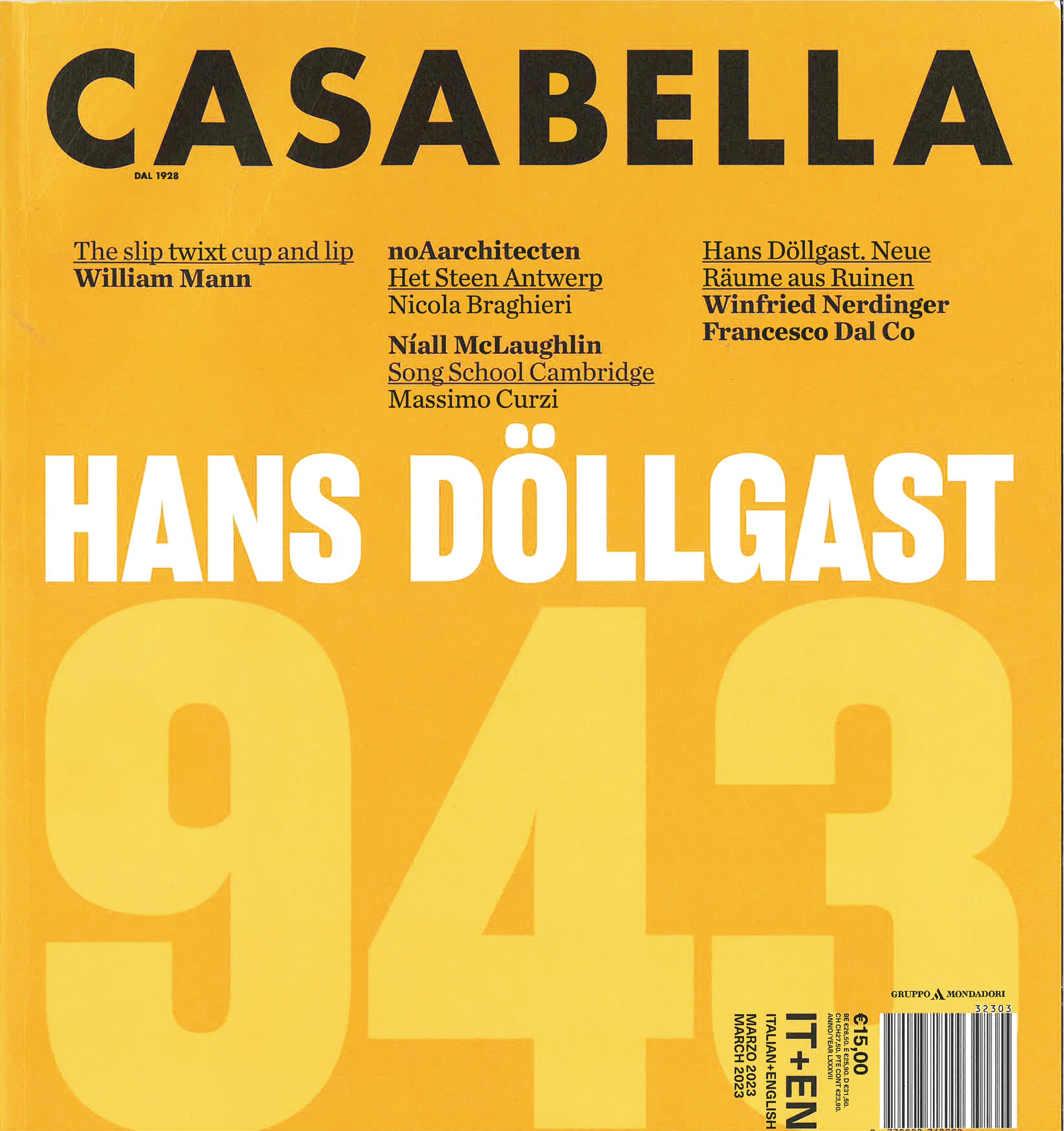WongAvery Gallery - Casabella
March 2023
Text Massimo Curzi
Images Nick Kane
It seems clear that it must not have been easy to design in a sensitive location such as the one where the London-based studio Niall McLaughlin Architects has intervened. To build at the center of a courtyard formed over the centuries with buildings of different eras now listed as Level I and Level II heritage implied altering a balance that had existed for years, calling spatial and volumetric relationships into play, with the risk of modifying a very delicate context. The design of the new WongAvery Music Gallery at Avery Court, inside Trinity Hall in Cambridge, stems from the desire to create a new pavilion for listening to music, dose to the historic chapel, and also to contain the college's antique harpsichord.
We should first of all remember that this historic college was founded by Bishop Bateman in 1340 with the aim of training young people who would foster "divine worship" and the study of the civil sciences, in a context that became famous for its focus on law and jurisprudence. Built next to the River Cam, the college contains a small chapel constructed in and around 1366, known for being the smallest chapel among the colleges of Cambridge: this intimate, meditative character also marked the architecture of other buildings in the college, such as the hall built in 1729 by order of the Master at the time, Sir Nathaniel Lloyd. We can also imagine that the new architecture has been influenced by this character, given the precise proportioning of the small building in relation to its surrounding neighbours. The project is the result of lengthy research on form and sizing, conducted by making sketches and study models to verify proportions and measurements. I t should be emphasized, in this case, that only through the making of models of this type is it possible to test proportions, spans, openings and forms. Therefore these are clearly not models made a posteriori and displayed only for publication on websites and in magazines, as often happens today, because in this case the models have been made for the sole purpose of controlling forms and proportions in a sensitive context such as that of Avery Court: this is borne out by the humble materials utilized (normal paper and vegetable cardboard), quite unlike the usual materials and colours in vogue. The forms chosen bring out the intelligence of the design approach, leading to geometric factors capable of echoing the orthogonal character and dimension of the context, permitting perfect light for the surrounding windows facing the courtyard, especially the large ones of the nearby chapel, not compromised by the presence of the new architectural volume. The refined choice of materials is in harmony with those of the surrounding buildings: the use of coloured prefabricated concrete partitions is joined by deployment of two types of stone: a straw yellow sandstone, like "soft" Portland stone, and a harder pale grey stone in contact with the ground. The former, through its porousness, has an acoustic functioning, to control internal reverberation; the latter, with a more rugged surface, protects the building at the ground seam.
The central plan makes it possible to have four lateral spaces for listening, and a central space for the performer. The lateral modules are flanked by shelving to contain the college's large collection of musical scores, while the central space is two stories high, topped by a lantern to capture sunlight. A refined climate control system, with its main technical compartment in a portion below the building, triggers exchange with the upper part through channels positioned inside the lateral shelving. The control of temperature and humidity inside the space is fundamental for the conservation of the antique harpsichord. The perimeter windows open on to a courtyard created by landscape designer Kim Wilkie with a special selection of plants positioned at the edges, creating a natural backdrop for concerts in the summer. The new facility finally makes it possible to host harpsichord concerts and lessons, as well as the 22-voice choir of the college. The stone surfaces reflect the sound, while those in patinated brass of the document containers on the walls, together with the glass of the perimeter windows, help to achieve the required level of reverberation.
The project takes form through an elementary but very refined structure that sets the character of the new building, as has happened in many other projects by McLaughlin in the past, where the arrangement of the structure and the voids becomes a unit of measure and reference for the design of the entire building: a sort of musical composition that repeats the same series of elements with single or double cadences at the different levels. A matrix that utilizes the depth of the vertical posts at the perimeter as an effective filter to control the angle of the sunlight, creating an intimate character inside the building that reflects the atmosphere of the entire college.
